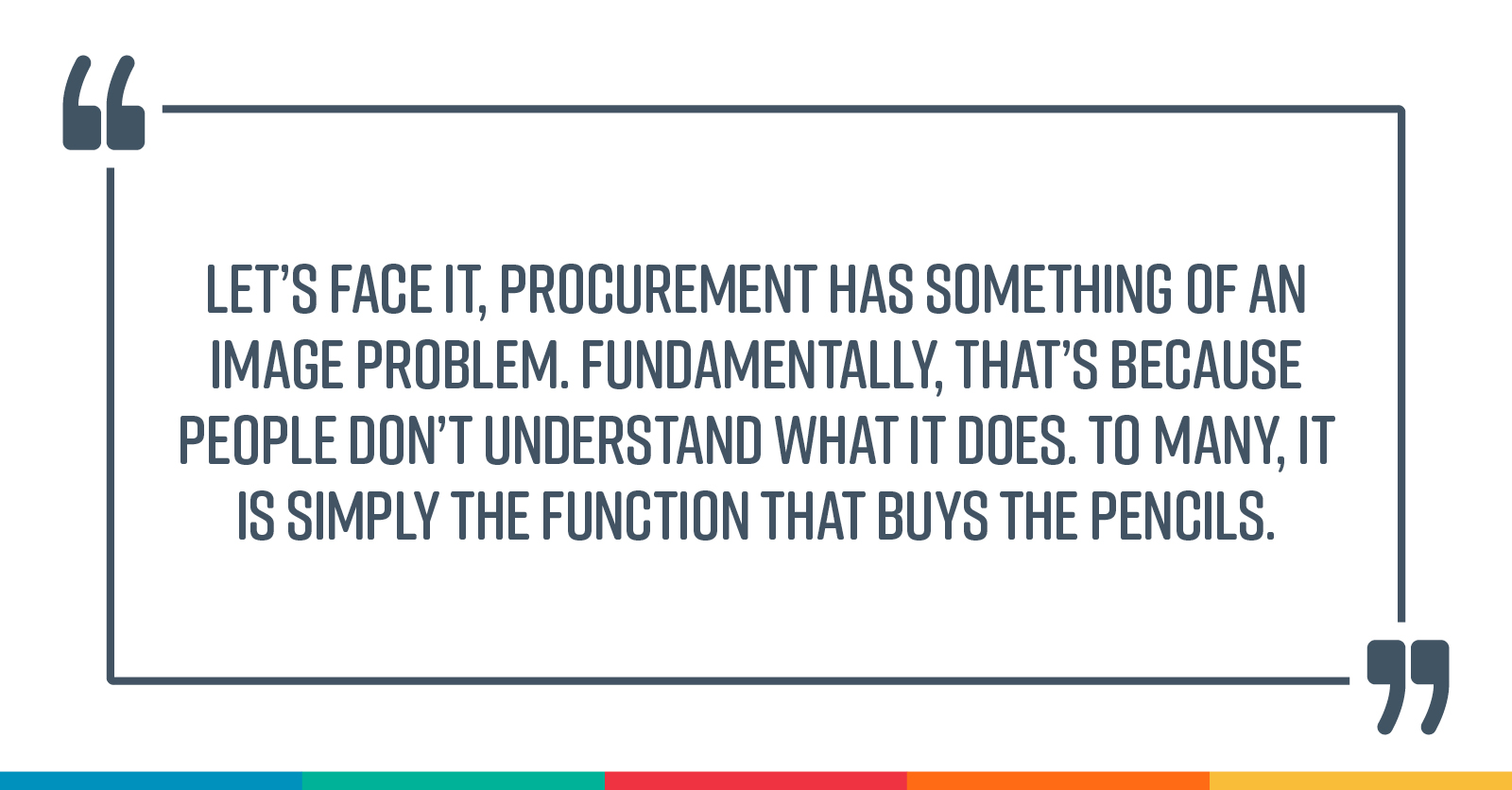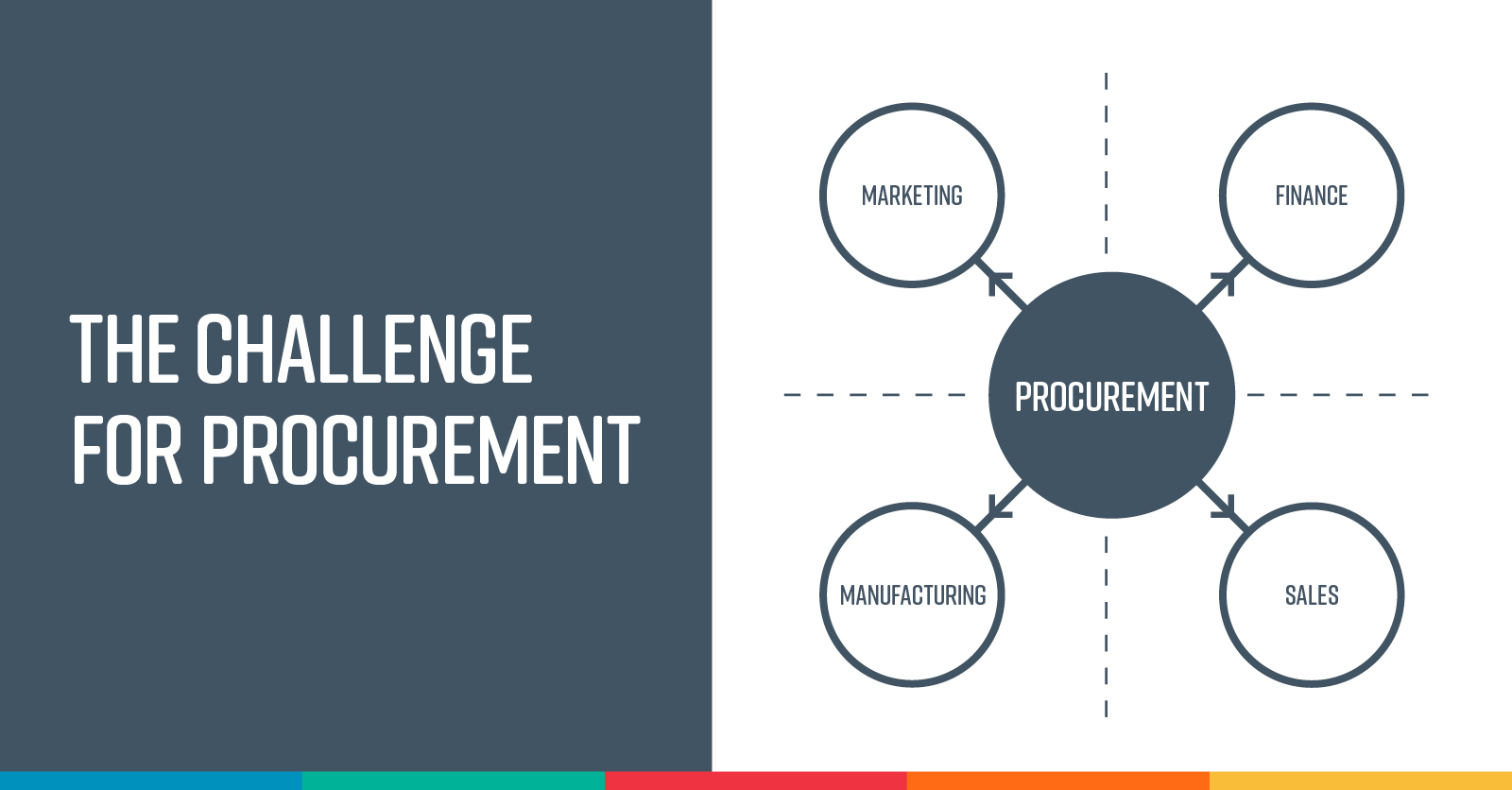Jonathan O’Brien considers how procurement can improve its brand image, develop effective internal communication strategies and implement cross-functional working in order to deliver organizational value.
Let’s face it, procurement has something of an image problem. Fundamentally, that’s because people don’t understand what it does. To many, it is simply the function that buys the pencils.

Worse than that, it can be seen as a department that gets in the way of progress, rather than one that moves the business forward.
And, yet, the procurement people I have met and worked with over the years are surprisingly creative individuals with a genuine passion for what they do. Indeed, many are experts in their fields, particularly those within organizations that work on the concept of category management.
Successful procurement requires cross-functional working and effective engagement in order to get everyone working together to achieve a common goal. But does the rest of the business see procurement people in that way?
It’s clear that procurement needs to communicate better. And, historically, it hasn’t been good at that.
Brand image
Procurement wants to be offered a seat at the table at the earliest stage of a project. And, clearly, that’s not happening often enough.
It is through good communication that people will start to understand what procurement is really about and consider engaging with it in a different way.
Effective communication will also start to improve the function’s brand image.
We’ve heard how procurement can be associated with negative traits, but it also has a number of positive and exciting attributes, such as its problem-solving capabilities. Procurement people not only work out where to source something sustainably, they also make sure that they tick all the boxes and bring it in on time and on budget. Procurement professionals should market themselves as experienced problem-solvers.
With its other strengths and qualities, such as adding value and bringing innovation, procurement has never had a better opportunity to step up. How do we get the next generation of value? How do we get security of supply in the future? How do we make the supply chain sustainable? How do we understand supply chain emissions? The call on procurement has never been stronger. What we need to figure out is how procurement can engage with the rest of the organization, get them to understand its value and, ultimately, follow its lead.

Internal comms
Of course, not all organizations are the same. Many employ a more strategic approach to procurement that helps an organization achieve its value. In such companies, everybody sees the value.
Being good at procurement at the strategic level requires engagement with the business through forming cross-functional teams in order to achieve an outcome. Remember – suppliers don’t belong to procurement, they belong to the organization. And it is the organization – not the procurement department – that determines what to buy. So, procurement, like no other function, runs across the entire business.
Engagement is challenging as most companies are silo-organized in terms of structure and financial accountability. Where walls exist between the different functions, procurement needs to break these down by talking to people with a central message that includes, “What are we trying to do? Why is it important? What do we need you to do?” After all, the best procurement projects are the ones where the rest of the organization has been actively involved and has been part of the journey. Communications are a massive part of this.
Procurement people mustn’t be scared to show they have a passion, a belief and a real enthusiasm for their subject matter. At the end of the day, you spend a lot of your hours in every day working for an organization. You know, you might as well try and enjoy it!
There are a number of ways that procurement teams can communicate what they do and numerous channels available. But, while the story is interesting, I’m not sure procurement functions have the skills or the knowhow to do it. They may need to choose the person in their team who’s good at communicating and give them responsibility for comms for the function, getting them to engage with the organization on their behalf.
One of the methods that has delivered the best results is producing podcasts for internal audiences. In recent years, podcasts as a concept have skyrocketed. The good thing about this communication tool is that you are able to engage with an interviewee without a camera in your face. It’s easy to arrange and the audience can access the program on their terms. They can listen to it in the car between meetings, on the train or put it on in the background, just as you would with any radio station. It’s simple, personal and cheap to produce. And because it’s delivered in audio only, you’d be surprised how many guests drop their guard and really allow their personality to come through, as they don’t feel threatened by a camera crew.
Takeaways
First, procurement needs a personality and a tone of voice to communicate its brand image and message.
Next, don’t be afraid to speak up on behalf of procurement. Find out who publishes or creates the content within your organization and volunteer some successes. Put it out there. Spread the word. Be evangelical about the good that you do.
Jonathan O’Brien, CEO of Positive Purchasing Ltd, is a leading expert on procurement and negotiation and works with global blue-chip organizations to help transform their purchasing capability.

